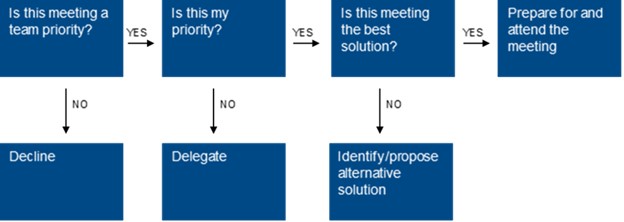When designing a hybrid workplace, communication guidelines are critical to creating an effective and thriving workplace.
While more than 90% of organizations say they are moving to a hybrid workforce, there are few organizations that have a detailed vision in place. Those organizations still in the design phase have the opportunity to avoid the mistake of not creating communication guidelines.
If you think communication guidelines are unimportant, or are low on the priority list, think again.
A new study of over 2,000 American office workers found that over 70% experienced some form of unclear communication from their colleagues. This lack of clarity leads to the average employee wasting four hours per week on poor or confusing digital communications, adding up to an average annual amount of $188 billion wasted across the American economy.
Another study looked at the impact of improved communication and found that a one-point increase on the communication Likert scale was associated with a 9% reduction in stress and a 19% reduction in burnout.
Teamwork and collaboration expert Erica Dhawan makes the point that as the number of collaboration tools we have at our disposal increases, the more complicated communication gets. As organizations employ an increasing number of communication tools to help create a thriving hybrid workplace, issues are exacerbated. This is largely due to the ineffective use of collaboration tools and the absence of communication guidelines.
Take the example of a biotech company. Employees expressed that they were feeling overwhelmed and burned out. Members of the leadership team expressed the same, but were also concerned about declining productivity and engagement.
What quickly became clear is that the organization had a number of collaboration tools in place, but they had not established communication guidelines and therefore they were not using the tools they had effectively.
In the absence of guidelines, the organization had evolved into an always-on culture with communication taking place 24/7 – and across multiple platforms. Further, while some people in the organization were using Teams to communicate, others were not on Teams, choosing to use their phone to send text messages. Meeting had devolved – in an effort to be inclusive, they included large numbers of people from across the organization, but little was being accomplished in the time allotted and many felt confused as to why they were required to attend.
We worked with the organization to establish clear communication guidelines. This included identifying collaboration hours, the hours within which communication was expected and the hours within which communication was not expected. We then worked with the organization to identify their collaboration tools and create guidelines of which tools to use when.
The following is what was developed. When looking at this, it is important to recognize that this is what this organization created. Yours may look different depending on your collaboration tools, goals, and culture.
Communication Guidelines

Finally, we worked with the organization to go back to the basics of meetings and emails. For meetings, this meant creating a flow-chart that could be used to identify who to invite to meetings and setting expectations around meeting goals and agendas.
Does this need to be a meeting?

We also helped to develop a decision tree focused on accepting and declining meetings.
Do I need to attend this meeting?

Similarly, we helped to establish guidelines on who to include on emails, and how to use reply all.
While basic, setting these guidelines reduced the firehose of communication that was overwhelming and negatively impacting the organization.
A critical piece of this work was gaining the buy-in of leadership to follow the established guidelines. With leadership not communicating outside of collaboration hours, using the collaboration tools as identified, it set the tone for the organization, reducing stress, and increasing productivity, collaboration, and engagement.
As organizations move forward with designing a hybrid workplace, it is important to take the time to intentionally establish communication guidelines. We recommend forming a team to do so.
Dhawan offers the following as questions to get the conversation going:
- What’s been the most collaborative experience you’ve had in each of these channels?
- IM (Microsoft Teams, Slack, Skype, etc.)
- Video calls
- Texting (if applicable)
- Based on these positive experiences, what are the norms that we want to set up for each channel As you set up these guidelines, think about message length, complexity, and response time.
- How long is too long for an IM message?
- Do we want to put a limit on the number of people to include in a group IM?
- When (if ever) is it appropriate to text someone?
- What is the expected response time for emails?
- When we transition to a hybrid office, how will we stay inclusive of our remote employees and avoid potential biases?
- Given that many of us are working asynchronously, how will we be sure to communicate when we are working while still respecting everyone’s personal time?
When designing a hybrid workplace, communication guidelines are critical to creating an effective and thriving workplace – skipping this step could lead to increased burnout and collaboration fatigue.







